Known as a common building material, brick, generally red, was the material of choice for affordable housing for years. Today, architects are reinterpreting this humble material in terms of its style and size using their small rectangular-block shape as an easy way to decorate a building with complex patterns and perforations.
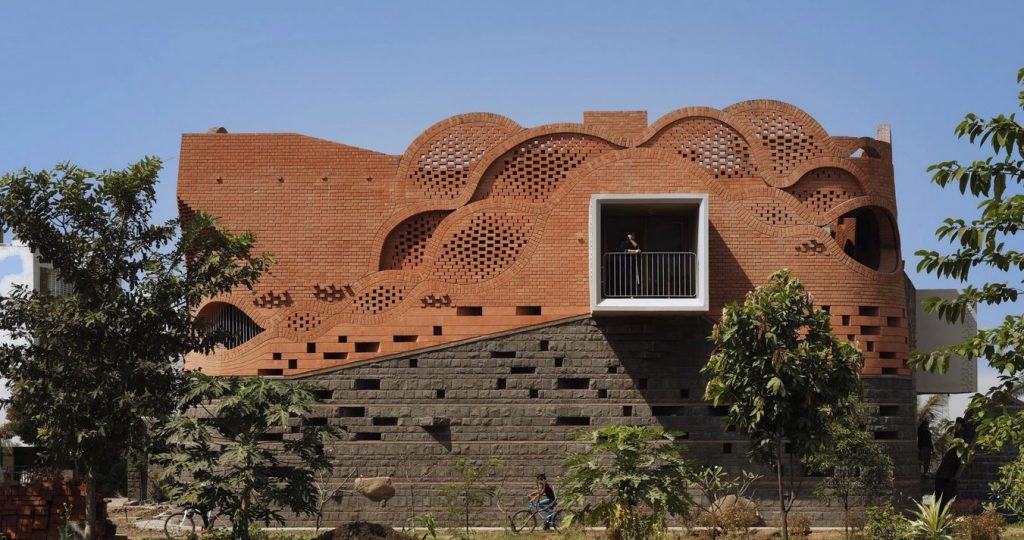
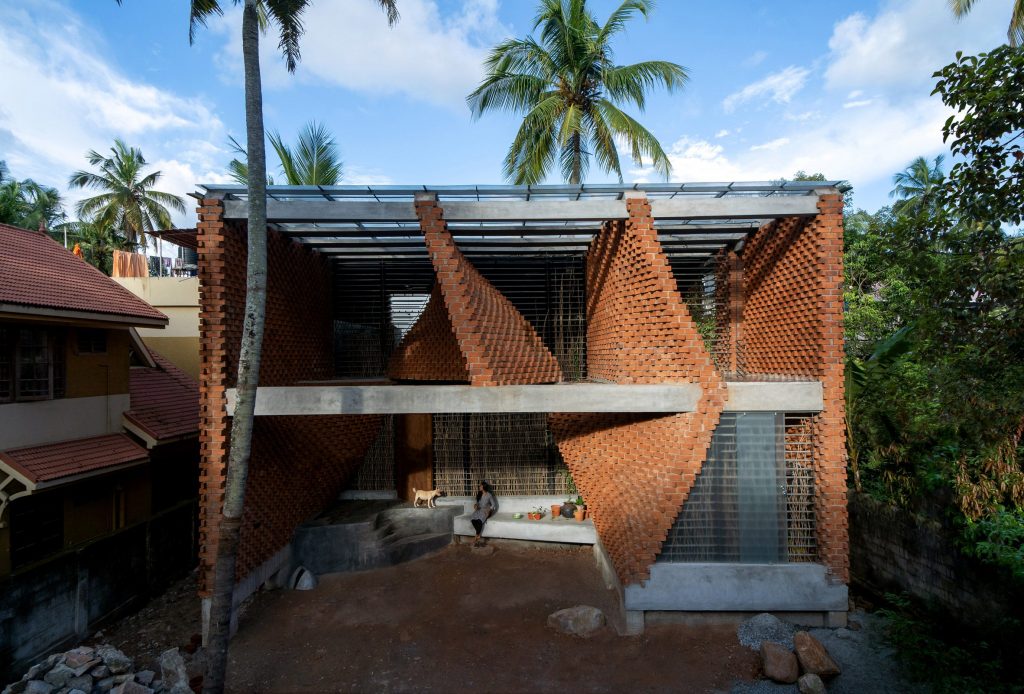
Pirouette House by Wallmakers
Local architecture office Wallmakers designed the Pirouette House in the Indian city of Trivandrum as a tribute to British-born Indian architect Lawrence Wilfred “Laurie” Baker, who promoted the revival of regional building practices and the use of local materials such as brick. The team adopted a bricklaying technique named the rat-trap bond used by Baker. It is a way to create a cavity in the wall.
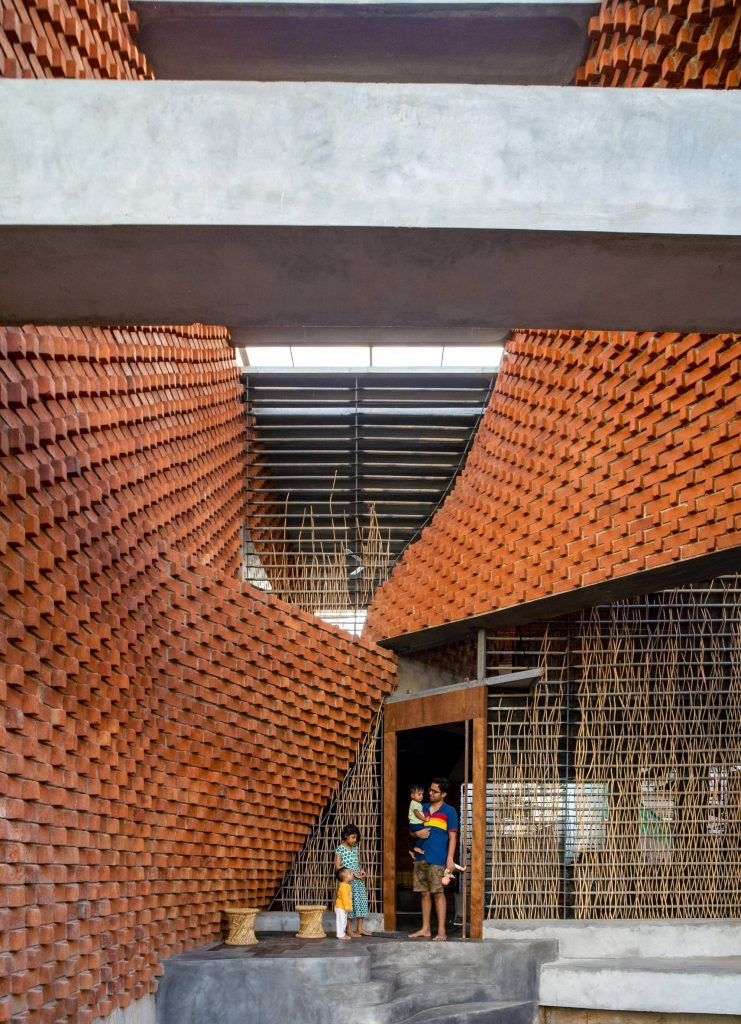
Pirouette House by Wallmakers
Originally intended to create a cavity in the wall that helps increase thermal efficiency and reduce the volume of bricks required, the rat-trap bond has been used by the architects to implement curved walls, which provide enhanced structural performance as well as conceal service ducts.
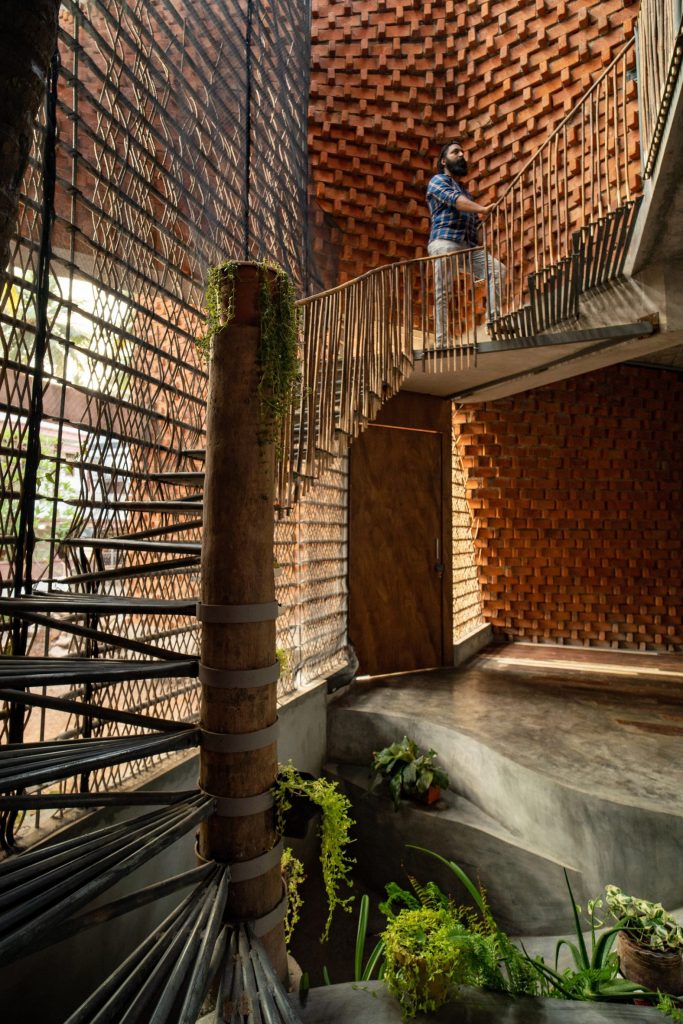
Pirouette House by Wallmakers
Situated on a compact site, the residence is surrounded by other properties, which led the architects to design an inward-facing building with all its spaces opening into a funneling central courtyard. The series of twisting brick walls form partitions that separate the living spaces and support the ferro-cement shell roof. Each staggered wall has been tailor-made to suit the issue of deficiency in space that this residence posed, aiming to create larger volumes and a feeling of privacy.
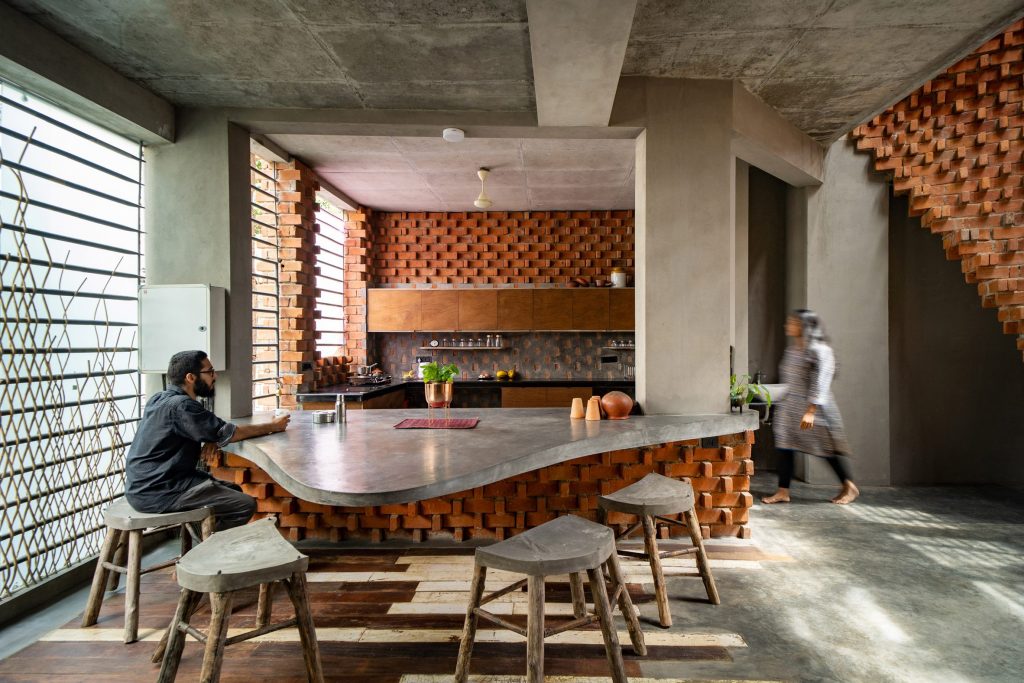
Pirouette House by Wallmakers
Protruding bricks produce patterns of light and shadow on the surfaces, which didn’t require any additional finishing, while openings in the façade facilitate for maximum cross-ventilation.
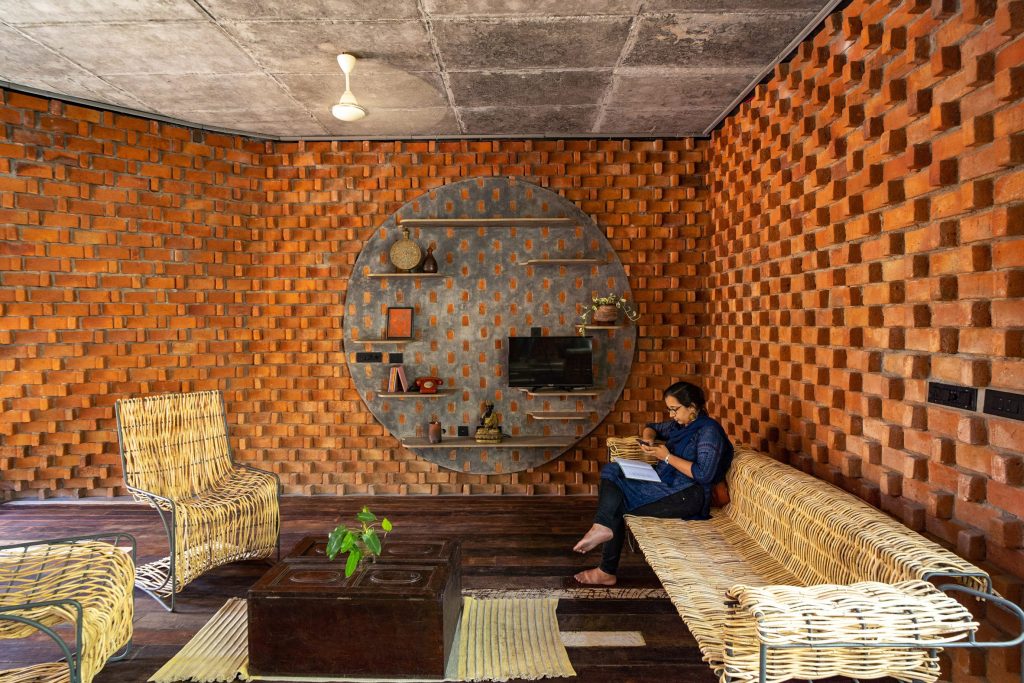
Pirouette House by Wallmakers
For this project, the team used local kiln-fired brick in order to support local industry that is in danger of collapsing, because these days construction firms prefer machine-made brick.
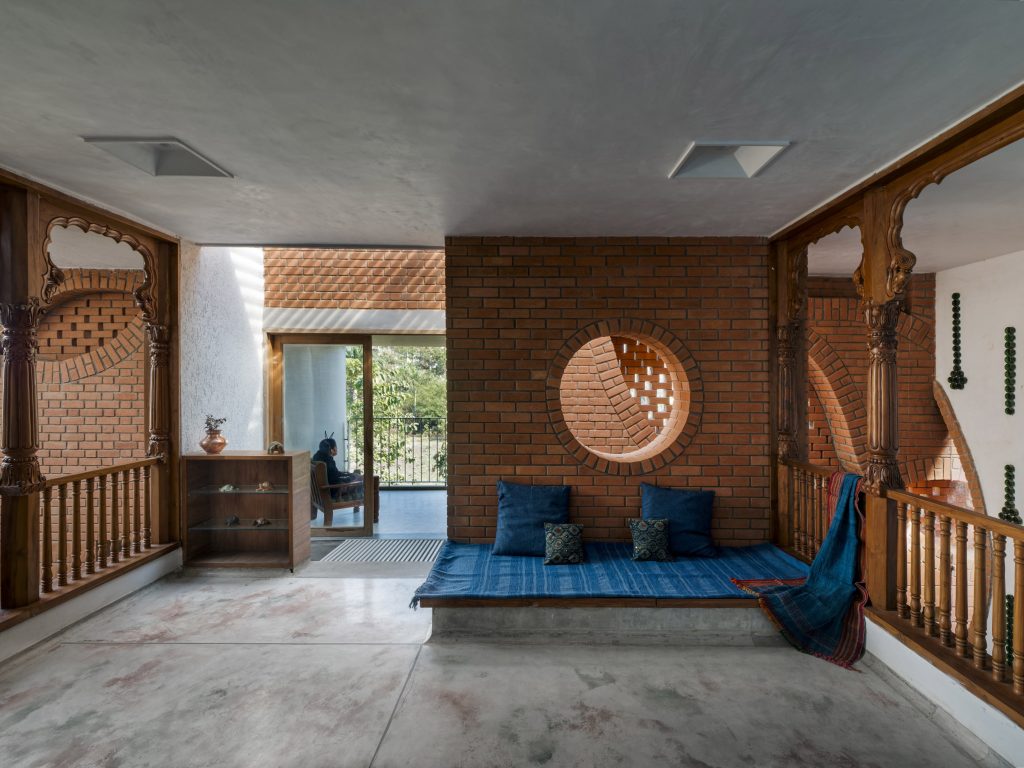
Pirouette House by Wallmakers
To pay homage to Baker who was known for salvaging and reusing waste materials, the team repurposed the metal scaffolding pipes used during the house’s construction to form the treads of the main staircase and the scaffolding planks – to form part of the living room’s floor.
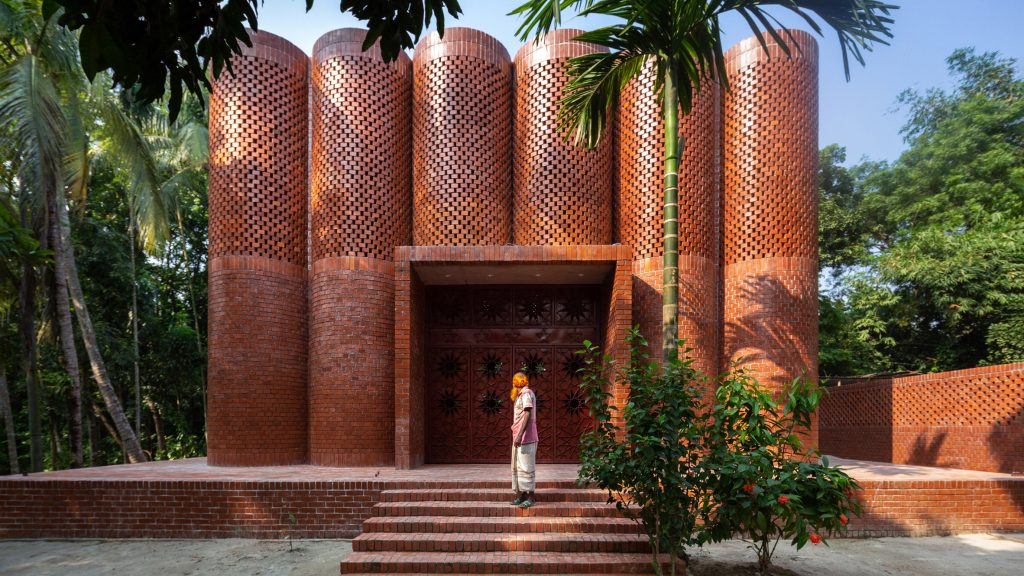
Shah Muhammad Mohshin Khan Mausoleum by Sthapotik
Brick turrets define the appearance of a Bangladesh mausoleum, which Dhaka-based architecture studio Sthapotik designed as a reference to traditional Islamic buildings. Named the Shah Muhammad Mohshin Khan Mausoleum, the turreted brick volume was designed as a Dargah, or shrine, to house the graves of a local religious leader’s family.
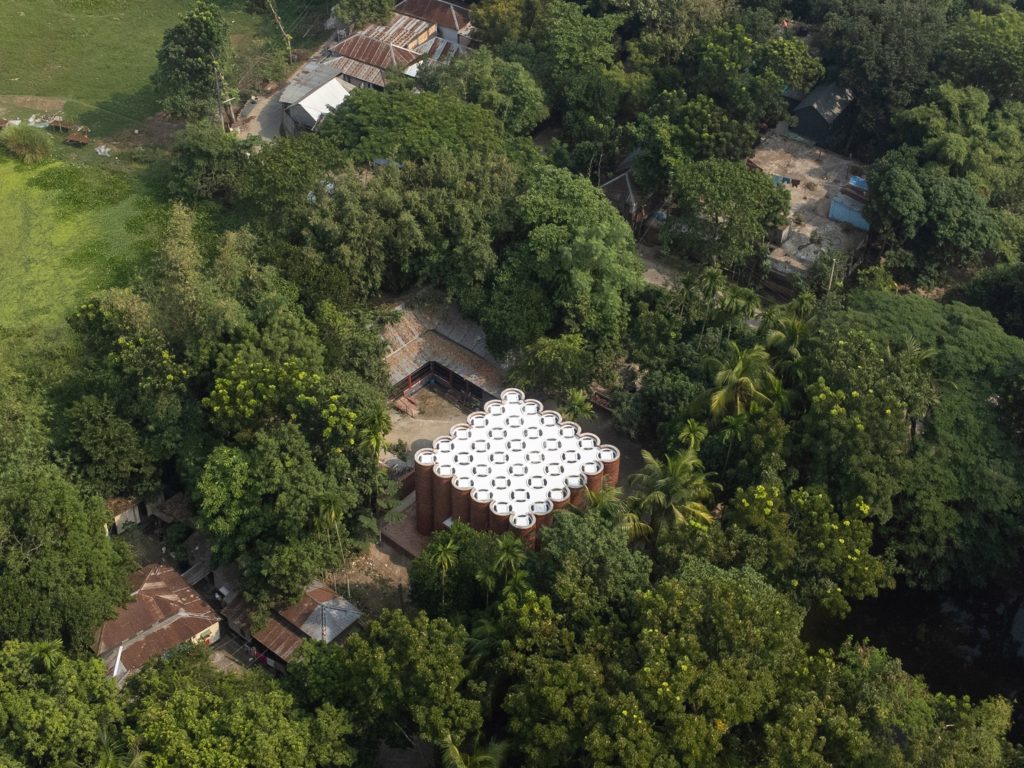
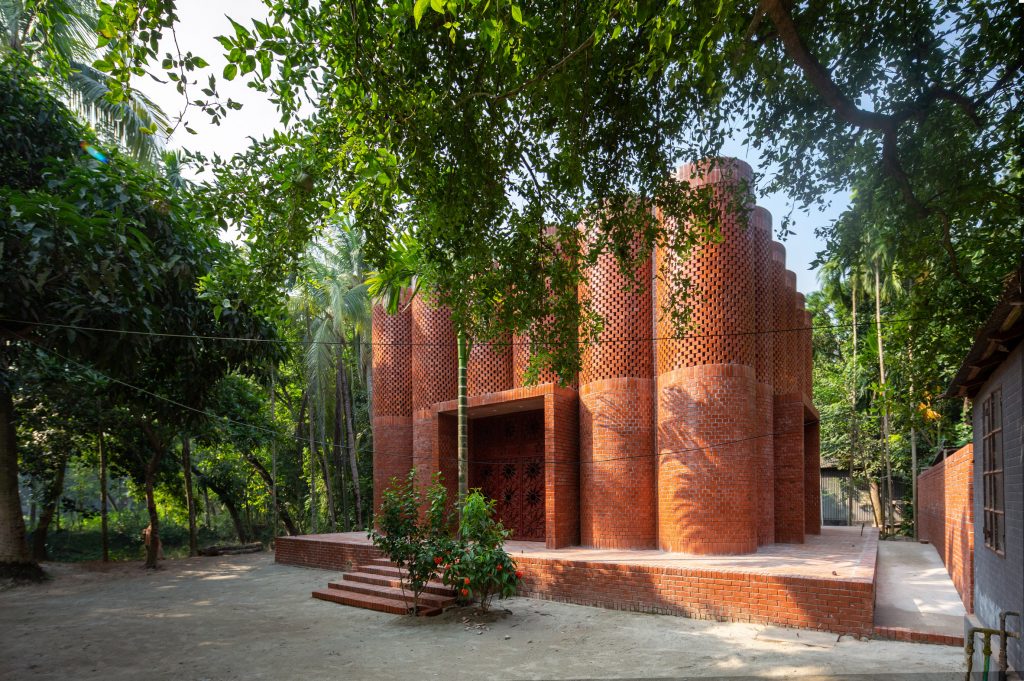
Shah Muhammad Mohshin Khan Mausoleum by Sthapotik
Designing the mausoleum, which is highly rooted in Bengali mosque architecture, the architects were trying to transform the essence of Bengal’s Sultani Period in a contemporary way. Aiming to craft the ‘chandelier of paradise, which blesses the souls with the light of paradise for their noble work on earth,’ the team has topped the building with a ceiling featuring a grid of thirty-six circular openings.
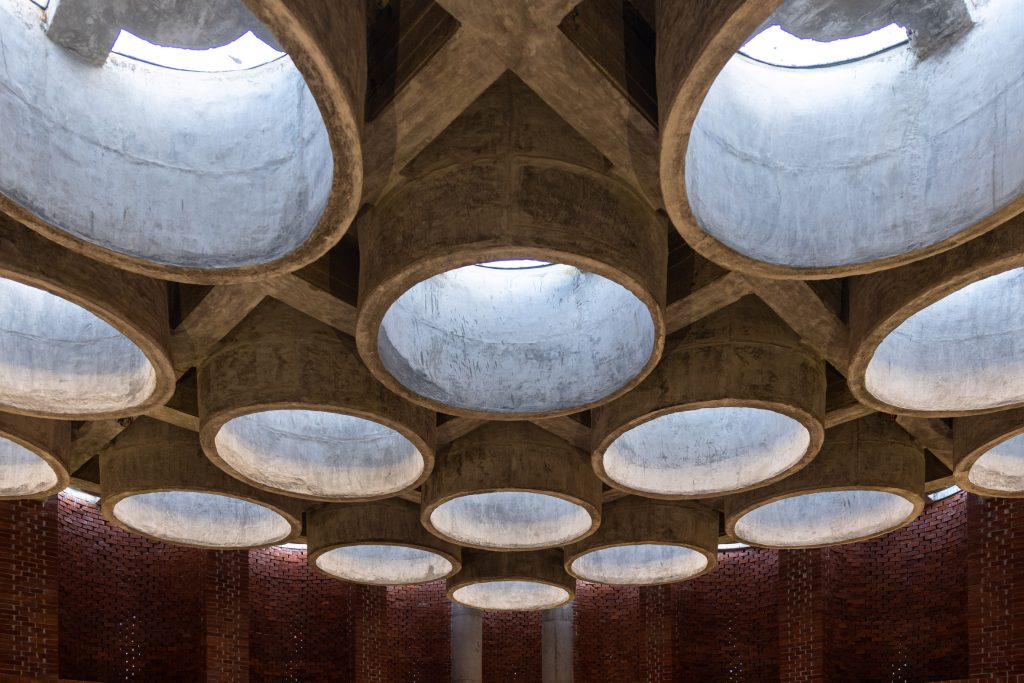
Shah Muhammad Mohshin Khan Mausoleum by Sthapotik
Designed to mimic multi-domed mosques, these stretch down into the space to form a chandelier-informed arrangement of skylights over the central plinth.
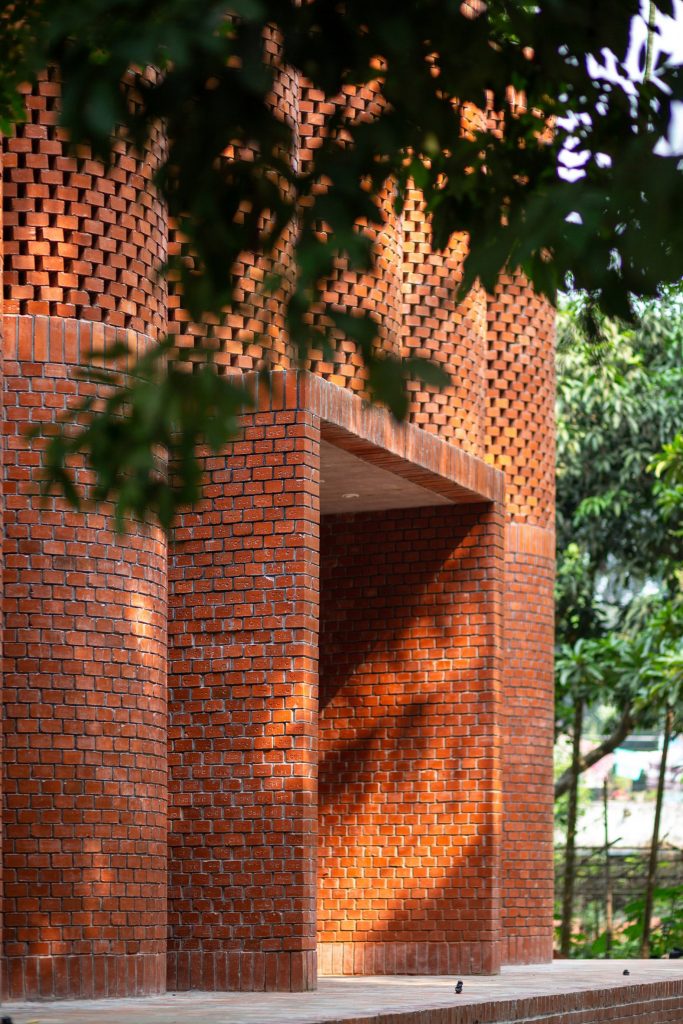
Shah Muhammad Mohshin Khan Mausoleum by Sthapotik
Each of the four walls comprises six cylindrical turrets made from red bricks that feature perforations towards the top for ventilation. The raised plinth, on top of which the mausoleum is built to avoid flooding, is also constructed using brick.
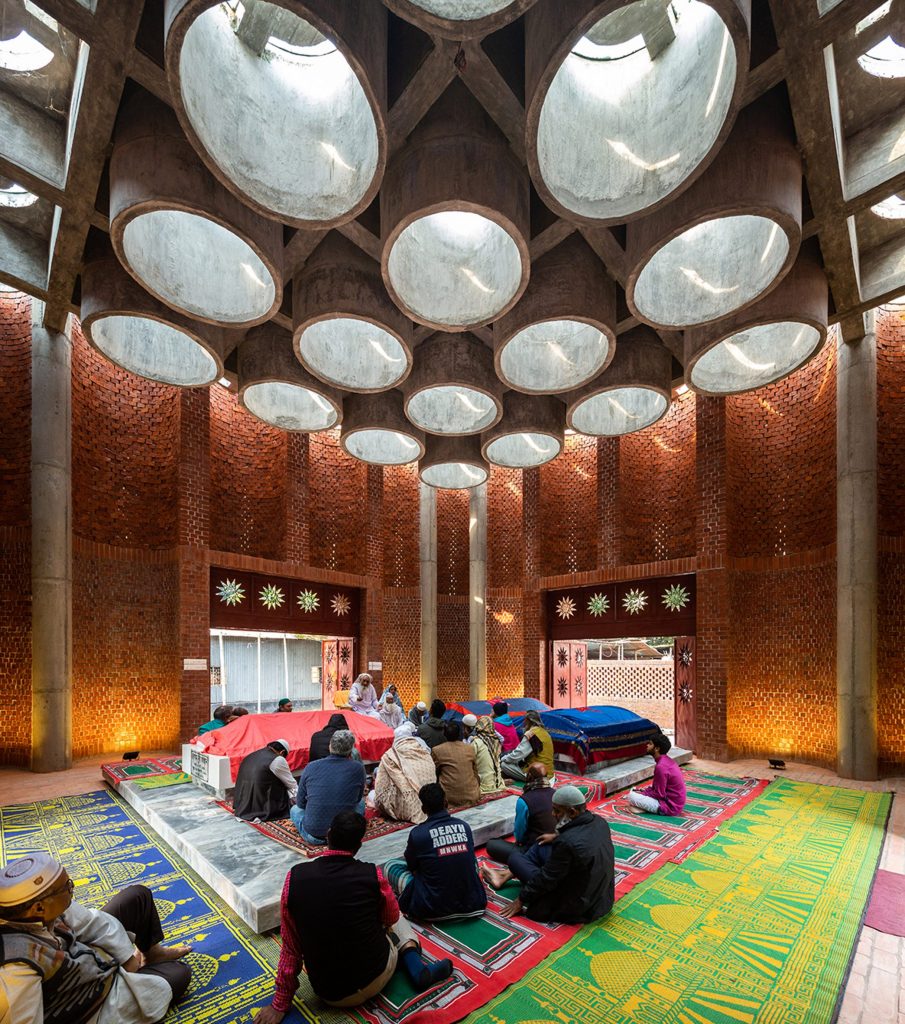
Shah Muhammad Mohshin Khan Mausoleum by Sthapotik
The bricks were sourced from a nearby brick field, paying homage to the traditional architecture of the region.
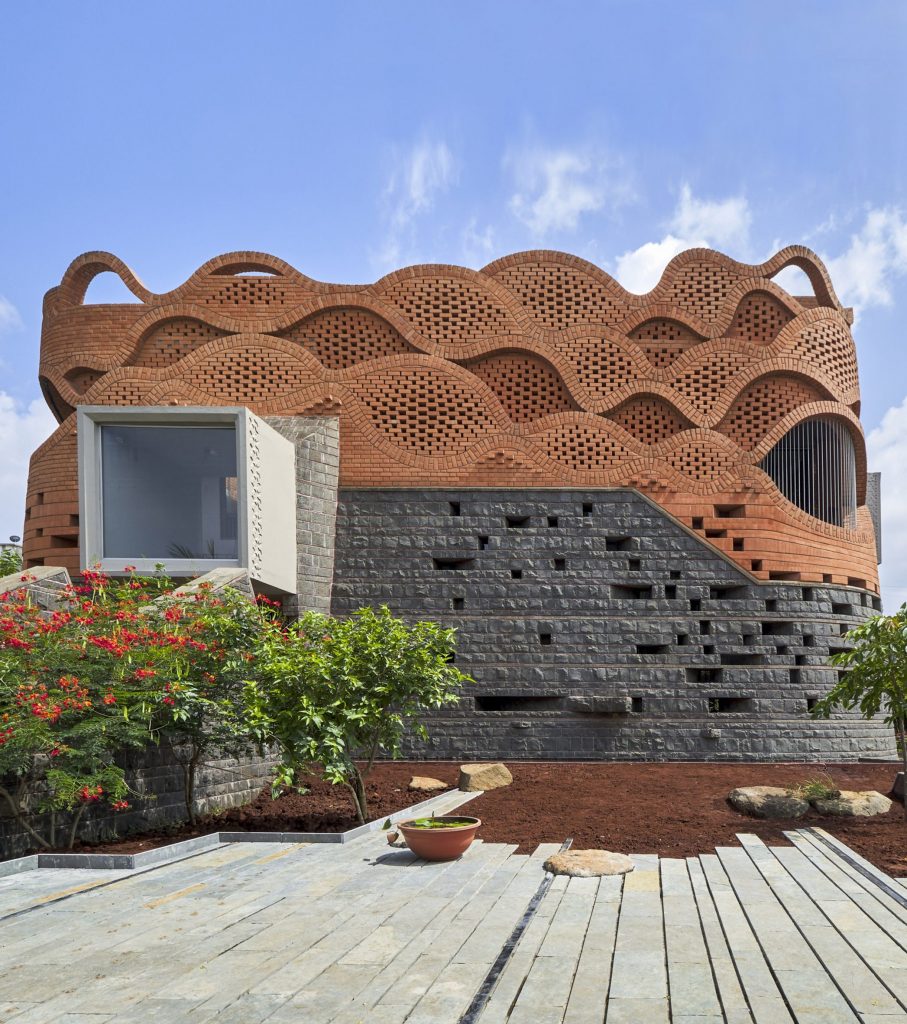
Gadi House by PMA Madhushala (also header image)
Local practice PMA Madhushala has used a screen of wavy, perforated brick to wrap it around an unusual rural home in Maval, India.
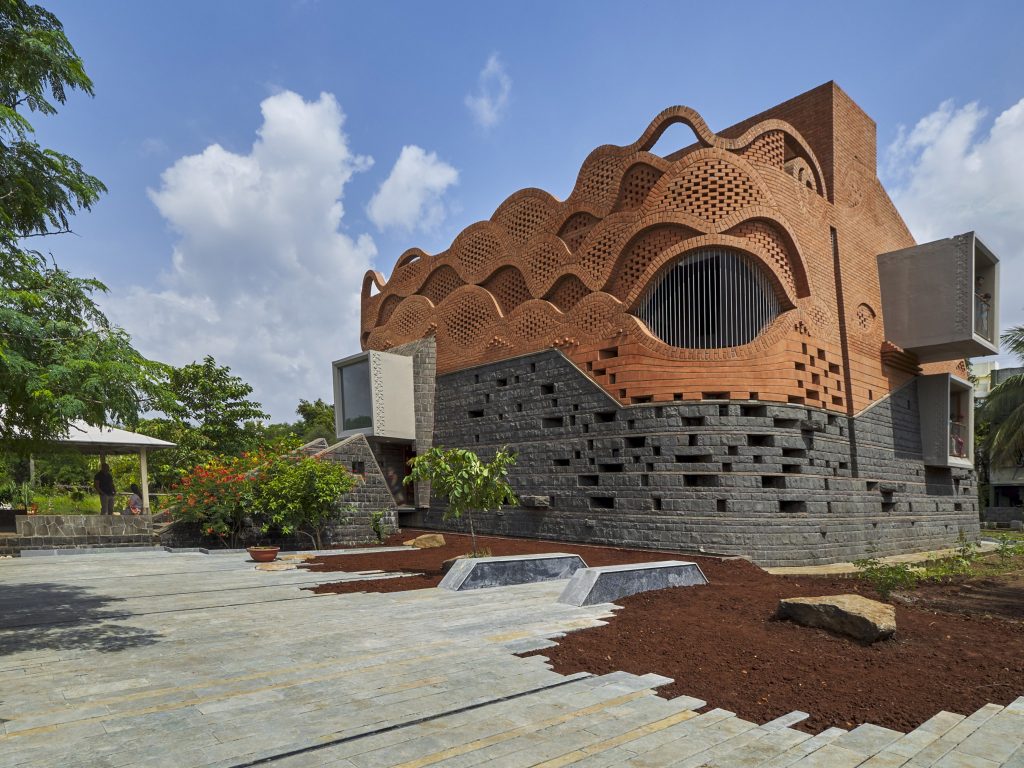
Gadi House by PMA Madhushala
As an attempt to find a link between the traditional understanding and the modern day life, the design philosophy draws inspiration from the regional house form called ‘Gadi’, its elements, spatial planning and details of ornamentations and fenestrations. ‘A Gadi’ is like a small fortress with thick walls secured from outside, with internal courts, balconies, common areas that create an interesting hierarchy of open, semi open and enclosed spaces.
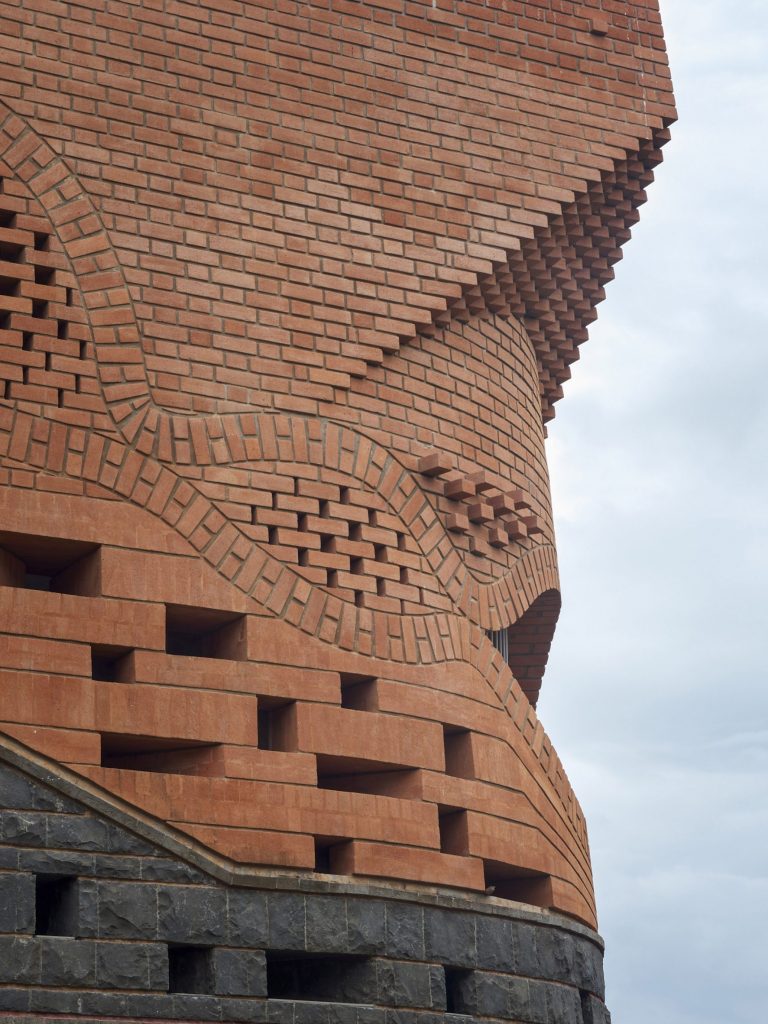
Gadi House by PMA Madhushala
The form of the residence originates with the idea of a ‘Gadi’. The team opted for stone and brick, which are considered to be the perfect choice for designing a fortress – and because of the aesthetic characteristics of the materials.
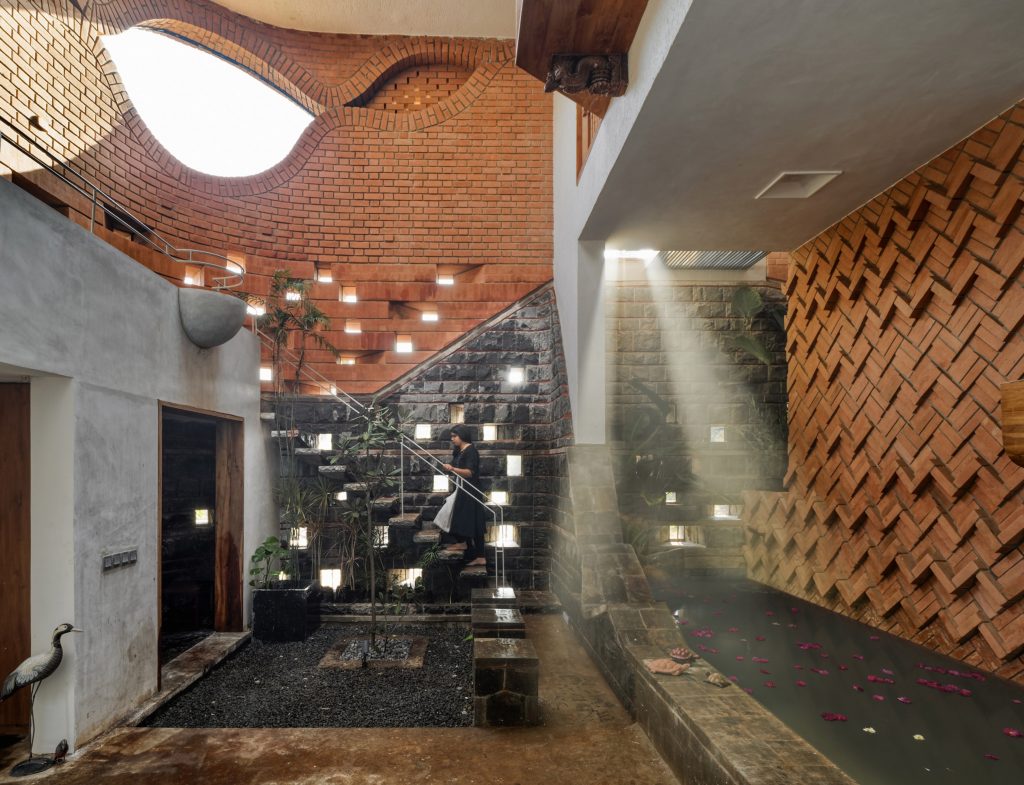
Gadi House by PMA Madhushala
While the walls made up of horizontal bands of brick lace look light and feminine, the stone plinth on which they are built serve as a masculine base. The amalgamation of both materials is further enhanced with honeycomb-like openings. The honeycomb geometry provides flexibility for location and size of the apertures according to the internal functions, all in a load bearing structure.